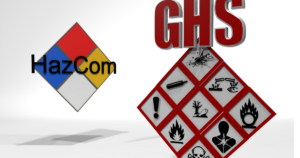Standard pictograms are essential for quickly and universally communicating information. You can find them on labels, signs, and product packaging. These pictograms ensure that people can understand important safety information regardless of language barriers by representing different hazards with easily recognized, basic symbols.
Categories of Standard Pictograms

- Health Hazard: This pictogram is used to identify substances that may be harmful to one’s health, such as those that are toxic, carcinogenic, or have other negative effects. Examples: An exclamation point inside a triangle can indicate less serious health risks, while a skull and crossbones symbol can indicate acute toxicity.
- Flame: Marks the existence of combustible substances or possible fire dangers. Examples: To alert consumers to flammability, simple flame icons are used on items like lighters and gas appliances.
- Exclamation Mark: Describes risks that could result in less serious harm to one’s health or property. Examples: It warns users of potential skin or eye irritation and is frequently found in household cleaning products.
- Gas Cylinder: Describes gases that are under pressure and highlights the possibility of an explosion or leak. Examples: This symbol is frequently seen on compressed gas containers used for welding or medical gases.
- Corrosion: Points to materials that have the potential to harm living tissues or metals. Examples: This pictogram appears on batteries that contain corrosive materials like sulfuric acid.
- Exploding Bomb: Indicates the possibility of explosive hazards, usually related to materials that are unstable or reactive. Examples: This symbol denotes possible danger and is present on fireworks, dynamite, and other explosive materials.
- Biohazard: Indicates the existence of biological dangers, such as infectious substances. Examples: In medical facilities and laboratories that handle potentially hazardous microorganisms or biological materials, biohazard symbols are frequently utilized.
- The GHS Acute Toxicity Skull and Crossbones: Symbol designates substances that have the potential to cause severe acute toxicity, indicating potential short- or short-term health risks. Example: Frequently found on labels for medications or chemicals such as pesticides.
- Environment: Draws attention to substances that may be detrimental to ecosystems by highlighting hazards to aquatic life or the environment. Found, for instance, on goods that include contaminants that may harm the environment.
- Health Hazard with a Flame: This combination represents chemicals that are potentially harmful to one’s health in addition to being flammable. For instance, used on products where both flammability and health hazards coexist, such as certain chemicals.
- Gas Flame Over Circle (GHS Gas Under Pressure): This symbol denotes the presence of gases that are under pressure and may present a risk of explosion or projectile. Example: Frequently observed on cylinders holding oxygen or propane that have been compressed.
- Skull and Crossbones with an Exclamation Mark (GHS Health Hazard): This symbol emphasizes serious health risks by combining the acute toxicity symbol with an exclamation mark. Example: Present in substances that pose a risk to human health in addition to acute toxicity.
Non-Standard Pictograms:
To highlight the significance of comprehending context-specific symbols, certain industries or geographical areas may employ non-standard pictograms to communicate particular hazards.
Education and Training: To raise awareness and encourage safe practices, employees, customers, and the general public must receive regular training on the meaning of standard pictograms.
Changing Standards: Over time, as new technologies and research are developed, standards for hazardous communication, including pictograms, may change. It is essential to stay informed about these changes to ensure safety.
The Global Harmonization System (GHS)

GHS is a framework that unifies the labeling and classification of chemicals on an international level.
It uses icons such as an exclamation point for health risks, a flame for flammability, and a skull and crossbones for acute toxicity.
By ensuring uniformity in hazard communication across the globe, the GHS system encourages safer behaviors and improved understanding.
The Value of Typical Pictograms
Communication Clarity: Pictograms help people quickly recognize potential hazards because they offer instant visual recognition.
Global Harmony: GHS guarantees that pictograms are universally recognizable, promoting comprehension of risks across linguistic boundaries.
Enhanced Safety Compliance: By using these symbols, manufacturers and employers can adhere to safety laws and make sure that consumers and employees are aware of any possible risks related to different materials and products.
Conclusion
Our comprehension of standard pictograms is improved by adding more information about particular GHS symbols and their combinations, stressing the significance of environmental factors, and emphasizing the dynamic nature of standards. This thorough knowledge promotes a culture of safety and awareness by enabling people to navigate possible hazards more skillfully. A proactive approach to hazard communication must include regular education, training, and adaptation to changing standards.
References
- Comprehension of hazard communication: https://pubmed.ncbi.nlm.nih.gov/23932696/
- Patient counseling services with the use of pictograms: https://www.ncbi.nlm.nih.gov/pmc/articles/PMC8747827/


